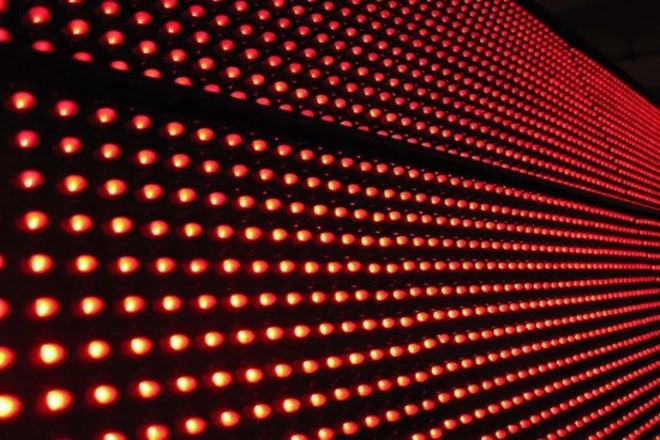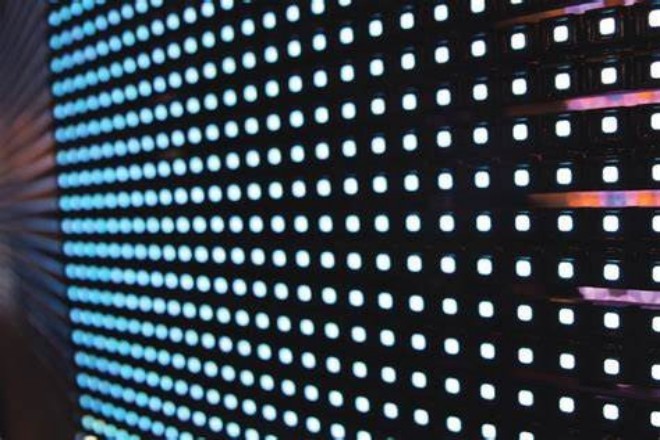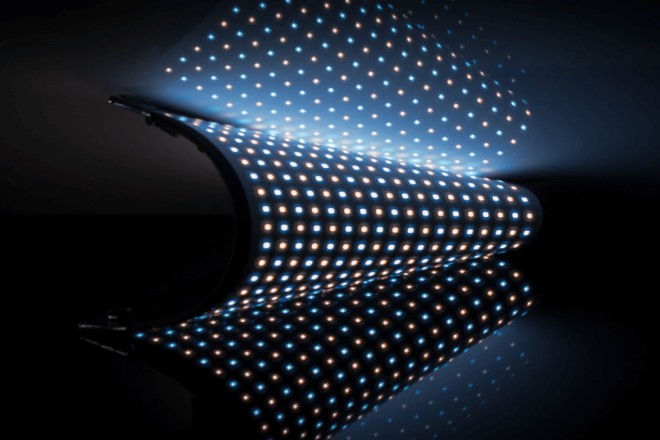소개

장마철이 다가오면 수호신들이 발광 다이오드 표시 스크린 램프 비드의 방습 문제가 걱정되시나요? 습도가 높은 환경은 보이지 않는 살인자와 같아 디스플레이 화면의 핵심인 램프 비드를 조용히 침식하여 정보 전달과 시각적 표현을 위협합니다.
걱정하지 마세요. 이 글에서는 우기에 사용되는 방습 LED 디스플레이 스크린 램프 비즈의 비밀을 밝히고, 일련의 실용적이고 효율적인 솔루션을 제시해 드리겠습니다.
설계 선정부터 설치 및 유지관리, 응급처치까지 하나하나 설명해 드리며, 우기에 발생하는 어려움에도 쉽게 대처하고 디스플레이 화면의 안정적인 작동과 긴 수명을 보장할 수 있도록 도와드리겠습니다.
다음 단계를 따라가면 우기에도 LED 디스플레이 화면이 빛나고 정보 전송을 위한 든든한 지원이 될 것입니다!
1. LED 디스플레이 화면의 램프 비드가 젖는 이유를 이해하세요
1) 습도가 높은 환경:
습기가 많은 욕실에 있거나 비가 내린 후 실외에서 젖어 있을 때 공기가 습기로 가득 차 있다고 상상해보세요.
마찬가지로 LED 디스플레이 화면이 장시간 이처럼 습도가 높은 환경에 노출되면, 특히 기온이 떨어질 때 수분이 응축되어 디스플레이 화면 표면에 작은 물방울이 맺힙니다.
디스플레이의 밀봉이 제대로 되지 않으면 이러한 물방울이 내부로 스며들어 램프 비즈와 같은 구성 요소에 닿아 축축해질 수 있습니다.
2) 밀봉이 불충분함:
LED 디스플레이를 설치하거나 유지 관리할 때는 모든 틈새가 제대로 밀봉되었는지 확인해야 합니다. 설치 중에 씰이 노후화되거나 손상되거나 단단히 맞지 않으면 틈새가 남게 됩니다.
이러한 틈새는 비와 습기와 같은 외부 요인이 디스플레이 내부로 쉽게 들어올 수 있는 작은 문과 같습니다. 내부 습도가 상승하면 램프 비드와 같은 민감한 구성 요소가 영향을 받습니다.
3) 온도 차이로 인한 응축:
추운 겨울날, 밖에서 따뜻한 방으로 걸어 들어갔을 때 안경이 즉시 안개가 끼는 것을 상상해 보세요. 이는 온도 차이로 인해 공기 중의 수분이 응축되기 때문입니다.
마찬가지로, 실내와 실외의 온도차가 큰 환경에 LED 디스플레이가 설치될 경우, 디스플레이 표면에 결로 현상이 발생할 수도 있습니다.
이러한 응축 현상을 적시에 처리하지 않으면 디스플레이 내부로 침투하여 램프 비드를 손상시킬 수 있습니다.
4) 부적절한 유지 관리:
LED 디스플레이를 양호한 상태로 유지하려면 일상적인 유지 관리가 필수적입니다. 세척 시 너무 젖은 천이나 부적절한 방법을 사용하면 디스플레이 표면에 물 얼룩이 남을 수 있습니다. 오랫동안 세척하지 않으면 이러한 물 얼룩과 먼지가 섞여 제거하기 어려운 먼지를 형성하여 디스플레이에 습기가 생길 위험이 더욱 커집니다.
2. LED 디스플레이 램프 비드에 습기가 있을 경우의 주의사항

1) 방습 성능이 좋은 LED 디스플레이를 선택하세요
1.1). 높은 IP 보호 수준의 중요성:
- IP 보호 수준:
이는 제품의 방진 및 방수성을 측정하는 국제 표준입니다. 예를 들어, IP65는 제품이 먼지로부터 완벽하게 보호되고, 어느 방향에서든 물이 분사되어도 내부에 손상이 발생하지 않음을 의미합니다.
IP 보호 수준이 높은 디스플레이를 선택하는 것은 마치 디스플레이에 방수 코팅을 하는 것과 같아 비오는 날이나 습한 환경에서도 영향을 받지 않도록 보호합니다.
- 특징:
이러한 디스플레이는 일반적으로 부식 방지 금속 프레임 및 방수 고무 링과 같은 특수 소재와 디자인과 잘 밀봉된 후면 패널을 사용합니다. 램프 비드와 회로 기판도 습한 환경에서 안정적으로 작동하도록 특수 처리되었습니다.
1.2). 고온 내성 및 산화 방지 재료:
- 고온 내성:
디스플레이는 작동 시 일정량의 열을 발생시킵니다. 소재가 고온에 강하지 않으면 변형되거나 노화될 수 있습니다. 고온에 강한 소재를 선택하면 디스플레이 화면이 고온 환경에서 안정적으로 작동하고 과도한 온도로 인해 손상되지 않도록 할 수 있습니다.
- 항산화:
산화방지 재료는 공기 중의 산소 및 기타 산화 물질의 침식을 방지하여 재료 표면이 변색되거나 광택이 없어지는 것을 방지할 수 있습니다. 이는 특히 장시간 실외 환경에 노출되는 디스플레이 화면에 중요합니다.
1.3). 섬세한 램프 비드 디자인:
- 램프 비드 밀봉:
램프 비드는 디스플레이 화면의 핵심 구성 요소 중 하나이며, 그 밀봉은 디스플레이 화면의 습기 저항성에 직접적인 영향을 미칩니다. 미세한 램프 비드 디자인은 각 램프 비드가 방수 소재로 단단히 싸여 수증기가 침투하는 것을 방지할 수 있습니다.
- 안정:
습기 저항성 외에도 미세 램프 비드 디자인은 램프 비드의 안정성과 수명을 향상시킬 수도 있습니다. 일반적으로 방열 성능과 충격 저항성이 더 뛰어나 다양한 혹독한 환경에서 정상적으로 작동할 수 있습니다.
2) 설치 환경 최적화
2.1) 통풍이 잘 되고 건조한 환경:
- 통풍:
좋은 환기는 환경 습도를 줄이고 수증기 축적을 줄이는 데 도움이 될 수 있습니다. 디스플레이 화면을 설치할 때는 공기 순환을 위한 충분한 공간이 있는지 확인하세요.
- 건조함:
지하실, 강 등 습기가 많거나 물이 닿기 쉬운 곳에 디스플레이 화면을 설치하지 마십시오. 주변 환경 자체가 비교적 습기가 많은 경우 제습기와 같은 장비를 사용하여 습도를 낮추는 것을 고려할 수 있습니다.
2.1) 온도 차이로 인한 응축을 방지하세요:
- 온도 차이 제어:
직접 에어컨을 사용하면 디스플레이 표면 온도가 급격히 떨어져 응축이 발생합니다. 따라서 디스플레이를 설치할 때는 에어컨의 공기 배출구 근처에 두지 마십시오.
- 단열 조치:
온도 차이가 큰 환경에서는 디스플레이에 단열층을 설치하거나 다른 단열재를 사용하여 온도 차이의 영향을 줄이는 것을 고려할 수 있습니다. 이렇게 하면 응축이 형성되는 것을 방지하고 디스플레이가 손상되지 않도록 보호할 수 있습니다.
3) 밀봉처리 강화
3.1) 방수 접착제와 실링 스트립의 적용:
- 방수 접착제:
설치 과정에서 방수 접착제는 디스플레이 주변, 캐비닛 및 캐비닛 조인트와 같은 주요 부분에 적용해야 합니다. 방수 접착제는 틈새를 채우고 방수 장벽을 형성하여 수증기가 디스플레이 내부로 침투하는 것을 방지할 수 있습니다.
- 밀봉 스트립:
고품질의 밀봉 스트립 소재를 선택하고 올바르게 설치하는 것도 매우 중요합니다. 이러한 밀봉 스트립은 탄력성과 밀봉성이 좋아야 하며, 다양한 환경에서 디스플레이의 변형과 움직임에 적응할 수 있어야 합니다.
중공 튜브 구조는 더 나은 완충 및 밀봉 효과를 제공하는 반면, 낮은 압축 설정률과 높은 파단 신율로 인해 밀봉 스트립은 장기간 사용 시에도 안정적인 성능을 유지할 수 있습니다.
3. LED 디스플레이 램프 비드의 일상적 유지관리 및 관리
LED 디스플레이 화면의 경우, 일상적인 유지관리 및 관리가 장기적으로 안정적인 작동을 보장하고 서비스 수명을 연장하는 데 중요합니다. 다음은 몇 가지 구체적인 유지관리 및 관리 조치입니다.
1.1). 정기적인 제습
- 우기의 제습:
장마철에는 공기 중 습도가 높아 디스플레이 화면 주변에 수증기가 쌓이기 쉽습니다. 따라서 에어컨이나 제습기를 정기적으로 사용하여 디스플레이 화면 주변 환경을 제습하고 건조하게 유지해야 합니다.
- 내부 제습:
외부 환경 외에도 온도 차이, 밀봉 불량 등으로 인해 디스플레이 화면 내부에 수증기가 발생할 수도 있습니다. 이때 디스플레이 화면 내부에 건조제를 넣거나 디스플레이 화면의 제습 기능(있는 경우)을 켜서 내부 습기를 흡수하여 제거할 수 있습니다.
1.2) 정기적인 청소
- 깨끗한 먼지:
디스플레이 화면의 내부와 외부에 붙은 먼지를 정기적으로 청소하는 것은 매우 중요합니다.
먼지는 디스플레이 화면의 방열 효율에 영향을 미칠 뿐만 아니라, 수증기의 부착 면적을 늘려 디스플레이 화면의 노화를 촉진합니다.
세척 시에는 부드러운 천을 사용하여 가볍게 닦고, 디스플레이 표면이 손상되지 않도록 화학 용제나 강한 세제는 사용하지 마세요.
- 메모:
세척 과정에서는 물이나 기타 액체가 디스플레이에 직접 튀지 않도록 특히 주의하여 단락이나 기타 손상을 방지하세요.
1.3) 장기간 사용하지 않는 것을 피하십시오.
- 조명을 켜고 습기를 제거하세요:
디스플레이를 장기간 사용하지 않으면 내부에 습기가 축적될 수 있습니다. 따라서 디스플레이를 가능한 한 오랫동안 꺼두어야 합니다.
습도가 높은 지역에서는 하루에 한 번 디스플레이를 켜는 것이 좋습니다. 건조한 지역에서는 일주일에 세 번 정도, 한 번에 약 2시간씩 켜도 됩니다. 이렇게 하면 디스플레이 자체의 열을 통해 내부 습기를 분산하는 데 도움이 됩니다.
1.4). 검사 및 유지 관리
- 정기점검:
디스플레이의 연결선, 전원 코드, 라디에이터 및 기타 구성품이 손상되지 않았는지 정기적으로 점검하고, 손상된 구성품은 적절한 시기에 교체하여 디스플레이가 정상적으로 작동하도록 하세요.
- 내부 검사:
습도가 높은 환경에서는 디스플레이 내부에 결로, 서리 등이 발생하는지 정기적으로 확인하는 것도 필요합니다. 이러한 문제가 발견되면 습기로 인해 디스플레이가 더 손상되는 것을 방지하기 위한 조치를 즉시 취해야 합니다.
- 전문적인 유지 관리:
일상적인 검사 및 유지관리 외에도 전문가를 초대하여 디스플레이 화면의 포괄적인 검사 및 유지관리를 정기적으로 수행해야 합니다. 전문가는 전문적인 장비와 방법을 사용하여 잠재적인 문제를 감지하고 수리하여 디스플레이 화면이 항상 최상의 상태를 유지하도록 할 수 있습니다.
4. 응급처치 조치

1) 물이나 습기가 침투한 후의 취급
1.1) 즉시 전원 공급을 차단하세요.
중요성: 무엇보다도 디스플레이 화면의 전원을 즉시 차단하십시오. 이는 단락을 방지하여 추가 손상과 잠재적 안전 위험을 피하기 위한 것입니다.
작업: 빨리 전원 스위치를 찾아 끄고 디스플레이 화면이 완전히 꺼졌는지 확인하세요.
1.2) 물놀이 구역을 부드럽게 닦아주세요.
도구 선택: 깨끗하고 보푸라기가 없는 흡수성이 좋은 수건이나 걸레를 사용하세요.
작동 방법 : 화면의 물기나 축축한 부분을 부드럽게 닦아 표면의 수분을 대부분 흡수합니다. 화면의 긁힘이나 손상을 방지하기 위해 과도한 힘을 피하십시오.
1.3) 디스플레이 화면을 말립니다.
도구 선택: 에어컨의 제습 모드를 켜거나 선풍기 등의 건조 장치를 사용하세요(열풍기가 아님에 유의하세요).
작동 방법 : 에어컨을 제습 모드로 설정하고 공기 배출구가 화면에 직접 불지 않도록 합니다. 동시에 팬을 사용하여 디스플레이 화면에 공기를 불어 내부 수증기의 증발을 가속화합니다. 불필요한 화면 손상을 방지하기 위해 적절한 거리와 풍속을 유지하는 데 주의하세요.
참고: 위의 방법이 여전히 작동하지 않으면 전문 유지 관리 담당자에게 유지 관리를 요청해야 합니다. 전기 안전에 주의하세요!
결론
요약하자면, 장마철은 LED 디스플레이 램프 비즈의 방습 작업에 매우 중요합니다.
과학적인 설계 선택, 엄격한 설치 및 구성, 꼼꼼한 일상 유지 관리 및 시기적절한 응급 처치를 통해 디스플레이 램프 비드를 습기로부터 효과적으로 보호하고, 사용 수명을 연장하며 디스플레이 효과를 개선할 수 있습니다.
마지막으로 LED 디스플레이 화면에 대해 더 알고 싶다면, 우리에게 연락해주세요.
